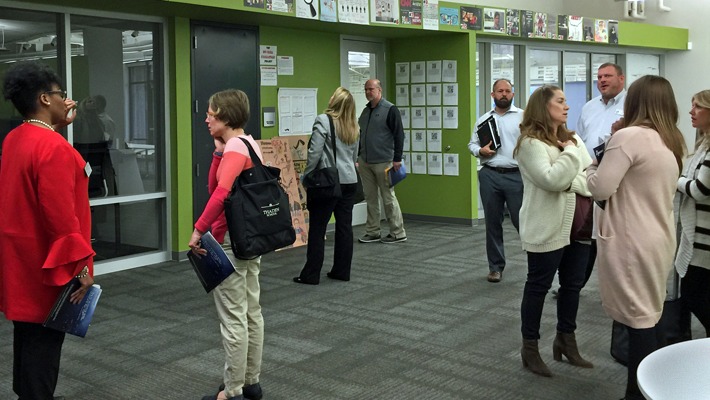
The Office of Innovation for Education, University of Arkansas, led an Arkansas group to visit a set of high-tech learning opportunities on a regional campus in Michigan. ForwARd Arkansas sponsored our participation.
In the regional campus concept, students attend the regional campus only part of the day while remaining enrolled at their home school. “Home school” means the public school closest to where they live. The students take afternoon classes at their home school, participate in athletics through their home school and graduate from their home high school.
The home school benefits by having enrolled students that cost them substantially less, because about two-thirds of the classes the students take are paid for by the regional programs. Two of the regional programs are even provided at no cost to the home school. The home school pays a fee for the online learning program, but it is less than the state foundation-level funding per student. The home school transports the students to and from the regional campus.
The regional program supports and protects the student’s home community. In many cases, participating students are ones the home school would have lost: they are disengaged, about to drop out, or planning to attend another school through choice. The regional program allows students to connect with real-world, state-of-the-art learning in a way not possible in most local high schools. It also allows students to remain connected to their community and their home school classmates.
The sophisticated career and technical equipment include items such as virtual reality programs and robotic machines for manufacturing. The faculty includes professionals in a field of work who later become teachers as a second career. The expense to make these options available would be unaffordable for most districts on their own.
Where exactly is this efficient and effective arrangement? It’s in Grand Rapids, Michigan. Similar programs exist elsewhere, but this one stands out because so many stellar components are located on one campus. Michigan, like Arkansas, has a regional structure, in which a group of districts is a member of an “intermediate school district” or ISD. In Arkansas, we call these ISDs “educational service cooperatives.”
Kent ISD
Kent Intermediate School District, or Kent ISD, serves 20 public districts, as well as charter schools and parochial schools. Kent ISD offers part-day programs, allowing students to move between schools and programs to meet their personal learning goals while remaining connected to their home schools.
On campus, Kent ISD offers three main programs or schools and provides a host of related supports and opportunities on and off campus:
- Kent Career and Technical Center
- MySchool@Kent
- Kent Innovation High School
- Kent Student Support Network (community school coordinator)
- Community college coursework
Kent Career and Technical Center
The Kent Career and Technical Center (KCTC) is housed in a 300,000-square-foot facility. A millage funds the equipment and much of the staff. Grants and business partnerships also contribute to the funding.
This video gives a good glimpse of how it all happens:
The students that travel to KCTC arrive from their home school for two sessions, taking place 6:55-11:30 a.m. Each session lasts 2 hours and 15 minutes. A third session is available from noon to 2:15 p.m.
Students attending KCTC are mostly juniors and seniors who have completed the bulk of their core courses during their freshman and sophomore years at their home schools. Students may return to their home schools in the afternoon for remaining core courses or use MySchool@Kent to complete their required credits. Sophomores can attend one session: a STEM overview course, called Design Lab.

KCTC has 23 state-approved programs at participating sites, including:
- Aviation Maintenance Technology and Avionics, and Aircraft Electronics, located at the Gerald R. Ford International Airport
- Precision Machining, located at Grand Rapids Community College’s Applied Technology Center, with easy access to advanced equipment and evening classes at the college
- Health Sciences Early College Academy, with biomedical technology courses located at Grand Valley State University’s Cook-DeVos Center and therapeutic and diagnostic healthcare professions courses located at the Downtown Market
- Hospitality and culinary programs, located at the Downtown Market
On the Kent ISD campus, KCTC provides programs in:
- 3-D animation and game design
- Applied construction technology
- Auto collision repair
- Automotive technology
- Criminal justice
- Design lab
- Diesel and equipment technology
- Engineering and architecture design
- Entrepreneurship and marketing
- Graphic communications
- Health careers
- Heating, air conditioning and refrigeration
- Hospitality and culinary programs
- Information technology
- Mechatronics
- Sustainable agri-science
One of the best examples of the quality of the programs can be seen in the digital technology program’s 3-D Autism project. This program is a national finalist in Samsung’s Solve for Tomorrow contest.
Kent Innovation High School
The Kent ISD campus also includes a New Tech Network school, Kent Innovation High School, that has expanded the traditional New Tech program. (Arkansas, too, has New Tech school programs — for example, the New Tech program at Cross County school district.) The small Kent Innovation High School, with about 100 students per class, provides core classes in the morning. Students return to their home schools in the afternoon for electives and extracurricular activities, riding the same buses as the KCTC students. Amway provided funding for much of the cost of facilities and equipment.
In this YouTube video, students describe their experience at the school:
One example of the student project-based learning at this school shows how students connected ideas from three classes. In history class, students studies World War II, in English class they studied dystopian literature, and in science class they studied gene editing using CRISPR. (CRSPIR is “clustered regularly interspaced short palindromic repeats,” which is the hallmark of a bacterial defense system that forms the basis for CRISPR-Cas9 genome editing technology.)
Students were asked to write an example of dystopian literature based on a prompt, such as, what if Hitler had access to CRISPR? They were also asked to write about various ethical concerns about the use of CRISPR addressing the potential for good and for misuse. Their answers included lessons learned in all three classes.
MySchool@Kent
MySchool@Kent (MS@K) is an online, personalized-learning school. Students physically attend class two times per week at the Kent ISD campus. This works well for a variety of students who may work, have children, are caregivers, want to accelerate their classes, travel extensively for sports activities, or need classroom credit recovery.
The school also serves students who have been expelled or have long-term suspensions. Students participating for disciplinary reasons don’t attend class at the ISD campus. MS@K serves them and other students at the downtown YMCA and the downtown library, where teachers work with the students
The primary software used for MS@K is APEX and eDynamic. Teachers can adjust or supplement the curriculum externally. For example, an English teacher facilitating the online learning requires students to write four essays a year, in addition to the software’s programmed learning activities. Students take part in goal setting and are monitored for keeping pace. In addition to the certified teachers participating in MS@K, three coaches and one interventionist are available to make home visits if students are falling behind.
Kent Student Support Network

Kent ISD is also a community school, in which teachers refer students to the Kent Student Support Network (KSSN) and the community school leader is embedded in the school team. KSSN works to reduce inequity and disparity for vulnerable students throughout the Kent ISD. Services include:
- Assistance with food security
- Assistance to students who are parents, including day care arrangements
- Health services, including dental and mental health
- Help with housing needs
- Help with tutoring
- Other individual student needs
Summary
Kent ISD wasn’t designed for the convenience of adults, institutions, or the community. Kent ISD was constructed to address student aspirations

Recent Comments